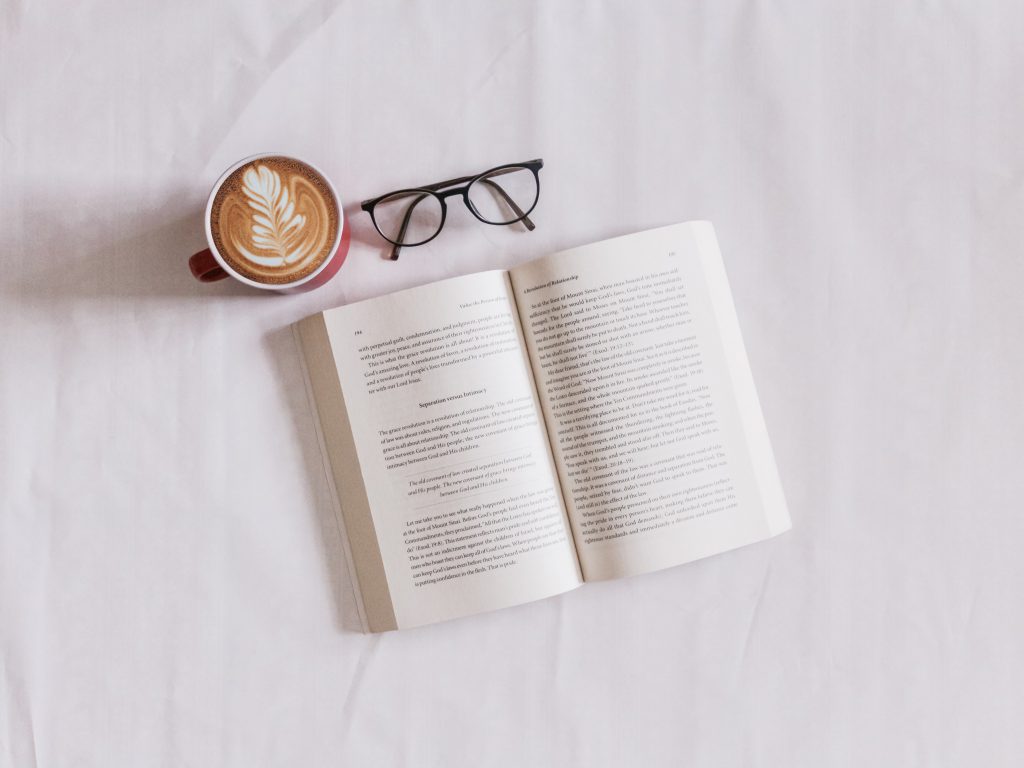
by admin | Sep 15, 2020 | Human Resources

The prospect of corrective action or termination makes a lot of managers nervous. That’s understandable. For employees, being disciplined or losing their job can be anything from moderately embarrassing to financially devastating, but it’s rarely a happy occasion. For the employers, these actions always come with some risk, and there are plenty of legal danger zones an employer can end up in if corrective action isn’t done properly.
Here are some tips from our HR Advisors to help you avoid these pitfalls and make corrective action productive for everyone:
Everyone in the organization, but especially those responsible for disciplining or terminating employees, should understand exactly what the organization’s policies are. When policies aren’t clear or people don’t understand them, their enforcement can become inconsistent and subject to bias. In these circumstances, discipline and termination will appear unfair. Worse, they may open the organization up to costly discrimination claims.
Managers should follow consistent disciplinary practices. Management meetings are a good time for the leadership team to make sure they’re using the same practices for discipline and termination. Inconsistencies in the organization, as noted above, can lead to allegations of discrimination.
Investigate allegations before you act on them. Sometimes, in a rush to correct wrongdoing or poor performance, a manager will discipline an employee after hearing only one side of the story. For example, a restaurant customer complains about rude service, and the server is immediately terminated and given no chance to explain what happened from their point of view. Such adverse actions tell employees they can be penalized even if they do nothing wrong, causing them to feel resentment, fear, and distrust. And the manager can find themselves in an awkward termination meeting if the terminated employee can prove then and there that they didn’t do what they were accused of doing.
Written warnings are best drafted by the manager and reviewed by HR. An employee’s manager often has firsthand knowledge of an infraction or unacceptable performance, so they’re in the best position to draft the written warning. HR can collaborate with the manager by reviewing the warning, ensuring that it is factual, unemotional, thorough, clear, tied to a company policy, and consistent with how others have been given written warnings previously.
Corrective action is best done by the employee’s direct manager. When corrective action is delivered by the manager, it tells the employee that the manager is invested in the employee’s success and is willing to help the employee improve. Leaving corrective action to HR tells employees that they’re “someone else’s problem” and that their manager may not be fully vested in the company’s policies and practices. It also creates an unnecessarily adversarial relationship between employees and HR, which can undermine HR’s ability to make positive, company-wide changes.
During a disciplinary meeting, a witness can help document what was said and done as well as provide logistical details. Not every disciplinary meeting needs a witness, though, especially if the issue is a minor one, or it’s a first conversation about performance issues. In these cases, whether to have a witness present can be left to each manager’s discretion. A witness is more useful for a meeting that is likely to escalate, either due to the nature of the issue or discipline, or the temper of the employee.
Fairness and courtesy can go a long way, even when termination is necessary. No termination meeting will be pleasant, but they’re often more unpleasant than they need to be. Good practices here include being honest and clear about the reason for termination, not relying on being an “at will” employer to avoid telling the employee why they’re being let go (they’ll generally assume the worst), and holding the meeting privately and at the end of the day so that the employee can clean out their desk and exit the workplace without an audience. Whatever a manager can do to help the employee leave with their dignity intact will be helpful in preventing future issues with the now-former employee.
Discipline and termination can be in the employee’s best interest—allowing bad behavior and poor performance to go on unaddressed does them no favors. If an employee isn’t doing a good job and is unable or unwilling to improve, they’re not helping the employer, their teammates, or themselves by staying in the organization. Chances are good that they’d be more successful and happier doing something else for someone else. And that’s okay!
Originally posted on thinkhr.com

by admin | Sep 9, 2020 | Human Resources, Work From Home

When quarantine officially came into effect, thousands of businesses with no remote work policy in place scrambled to piece together teleworking procedures robust enough to handle the complications of COVID-19. For many it was a learning process, a time of continual adjustment to find the right solutions for their organizations. Quarantine has now been in effect for several months now, and many departments have gone from growing pains to smoothly operating remotely.This means the re-emergence of non-crisis operations, like assessing your organization’s current talent and possibly filling in open positions. If your organization is at this point, you’re probably going to be conducting virtual job interviews soon—a daunting prospect for even the most seasoned HR professionals. No matter how skilled you are at conducting interviews, replicating an in-office meeting over Skype or Zoom can be a tricky needle to thread. Here are a few tips for conducting virtual interviews.
Maintain “Digital Eye Contact”
A crucial factor for in-person interviews, the importance of eye contact in an interview doesn’t disappear just because it’s over video conferencing. When maintaining eye contact in person isn’t possible, interviewers should keep their eyes trained on the camera, rather than on the candidate’s video feed. Some video conferencing software also displays an image of the person using it—I think we’ve all caught ourselves staring at our own image during a Zoom, Skype, or FaceTime, instead of the person talking. It’s easy to get distracted on remote calls, so be aware of where your eyes are focused.
Check Your Posture
As always, you’ll be a more engaging interviewer if you’re sitting up straight and exhibiting an alert, attentive posture. For virtual interviews, you should also consider leaning slightly forward to show interest in what the candidate’s saying. Leaning forward may be overkill for in-person interviews, but it’s advisable given the added barrier and distance of a video call. Just be sure to not to get too close to the camera—about an arm’s length away will suffice.
Limit Gesturing
Gesturing is an essential part of conversation, adding an important dimension to the way we communicate. While animated talking and gesturing helps provide context and additional information when we’re conversing in real life, it can be distracting on a small screen. Try to limit expressive hand motions so that the interviewee can focus on what you’re trying to communicate.
Consider On-Demand Interviewing
Despite the wide availability and ease of video conferencing, many concede it still fails to replicate the experience of an in-person interview in a satisfying way. For that reason, some companies have been experimenting with alternatives to interviews over Zoom or Skype. These include on-demand interviewing, where candidates record their responses to interview questions at their own convenience. “Instead of scheduling interviews during limited windows of time during business hours, recruiters can effectively interview larger volumes of candidates in a shorter period of time, effectively eliminating the bottleneck that often challenges that part of the hiring process.” explains HRMorning’s Tim Ilhefeld. If video conferencing interviews still aren’t cutting it for your organization, you may want to consider on-demand interviewing instead.
By Colleen Kucera, President at United Benefit Advisors
Originally posted at blog.ubabenefits.com

by admin | Sep 2, 2020 | Human Resources

Quarantine leaves us with a healthy chunk of time to reassess and spend time with the ones we love. But as quarantine goes on, the work must go on as well and for HR professionals, that means developing professionally as much as everyone else within the organization.
With all this time on your hands, a nice relaxing read is not only good for your development, but also your health. To help you develop a reading list that can fuel your own growth, we’ve provided a quarantine reading list of the best HR focused books to read in 2020.
Enjoy.
- HR on Purpose: Developing Deliberate People Passion by Steve Brown
A well-known thought leader in HR, Brown spends a great deal of time facilitating conversations about the possibilities in HR. In this book, he looks to challenge assumptions and preconceived notions about what HR should be and instead challenges the reader to think of the possibilities and tap into their passion for HR.
- HR from the Outside In: Six Competencies for the Future of Human Resources by Dave Ulrich, Jon Younger, Wayne Brockbank and Mike Ulrich
A cast of HR veterans has put together a handbook of competencies that sets the modern HR professional up for a more strategic role within the business. The put forward the argument that one of the most important roles of an HR practitioner is to be a credible activist, both for the employee and for the business as a whole.
- Generation Z: A Century in the Making by Corey Seemiller and Megan Grace
When Millennials (Gen Y) hit the workforce it created a shift in expectations of employers, workplace cultures and the way employers think about processes and employee relationships. Now, a new generation is entering the workforce and their lifestyles, expectations and world view are once again different.
To manage the Gen Z demographic effectively, HR leaders need to look at how the way this generation manages money, pursues education, values their relationships and what they want for their careers. This book explores these topics in a way that will help HR teams manage the generational diversity of their teams.
- Unleashing the Power of Diversity: How to Open Minds for Good by Bjørn Z. Ekelund
As cultures collide and the nature of work becomes more global, there are differences which could divide teams if we can’t develop a common language and a culture that highlights our common struggles. In this book, the author unveils a step-by-step program for communicating across cultural lines to develop a culture of trust that facilitates greater diversity within the organization and the construction of global teams.
- Talent Wins: The New Playbook for Putting People First by Ram Charan, Dominic Barton, and Dennis Carey
Talent planning is changing and requires a new way of doing things. This book uses examples from some of the world’s largest companies all the way down to Silicon Valley startups to show how HR can become the partner the business needs to acquire, develop and manage talent that can meet the technological and analytical demands of the modern workplace.
- Feedback (and Other Dirty Words): Why We Fear It and How to Fix It by M. Tamra Chandler and Laura Dowling Grealish
Good, honest feedback can be difficult to take, but as HR leaders, collecting feedback and being able to package it into constructive conversations that fuel employee growth is an art. In this book, the authors take a deeper look at where negative reactions to feedback come from and how to limit negative physical and emotional responses to it. It introduces the three F’s of feedback, (focused, fair and frequent) to help ease the tension that sometimes accompanies these discussions.
- Predictive HR Analytics: Mastering the HR Metric by Martin R. Edwards and Kirsten Edwards
Advanced HR metrics can be difficult, but are becoming a necessary part of the modern HR professionals work as employee engagement and experience take center stage. Being able to predict turnover, analyze and forecast diversity and fine tune employee interventions are all key skills discussed in this book. The authors focus on statistical techniques and predictive analytics models that can help improve the HR practitioner’s ability to do those things in an ethical manner.
- Talent Keepers: How Top Leaders Engage and Retain Their Best Performers by Christopher Mulligan and Craig Taylor
Through six case studies, the authors of this book reveal how organizations can develop and implement employee engagement plans that use tactics which have shown proven results. Starting from the time a new hire walks through the door to years into their development, this systemic approach will help HR leaders create a culture that retains and nurtures employees to grow within the organization.
- Nine Lies About Work: A Freethinking Leader’s Guide to the Real World by Marcus Buckingham and Ashley Goodall
Culture is everything, but there are misconceptions and lies that pervade the workplace and cause dysfunction. That is the central tenet behind this book which seeks to identify those lies and highlight freethinking leaders are able to see through the fog to see the unique nature of their teams and reveal truths about the workplace or what the authors call the real world of work.
Originally posted on HR Exchange Network

by admin | Aug 26, 2020 | Health & Wellness
 According to the National Center on Caregiving, a family caregiver (or informal caregiver) is “an unpaid individual (for example, a spouse, partner, family member, friend, or neighbor) involved in assisting others with activities of daily living and/or medical tasks.” In the US, 85% of caregivers care for a relative or loved one with 42% of those caregivers supporting an aging parent. Since early 2020, we have seen this vulnerable aging population fall prey to the COVID-19 pandemic. As a result, those providing care for this group have also begun to fall prey to this virus’s demise in the form of care-fatigue. We’ve compiled a toolkit of some simple resources to help the caregivers that are on the frontline of care for their loved ones avoid burnout.
According to the National Center on Caregiving, a family caregiver (or informal caregiver) is “an unpaid individual (for example, a spouse, partner, family member, friend, or neighbor) involved in assisting others with activities of daily living and/or medical tasks.” In the US, 85% of caregivers care for a relative or loved one with 42% of those caregivers supporting an aging parent. Since early 2020, we have seen this vulnerable aging population fall prey to the COVID-19 pandemic. As a result, those providing care for this group have also begun to fall prey to this virus’s demise in the form of care-fatigue. We’ve compiled a toolkit of some simple resources to help the caregivers that are on the frontline of care for their loved ones avoid burnout.
5 Tools to Avoid Burnout
- Plan Your Communication
When taking your loved one to any sort of appointment, plan out what you hope to accomplish while you are there. Make a checklist of what items you want to discuss with the provider. Ask your loved one what they would like to talk about as well. In addition, keep your other family members informed about the care you are providing by establishing a weekly check-in whether through email or Facetime or phone call.
- Don’t Go It Alone
Providing daily care can be immensely rewarding but can also be a physically and emotionally exhausting job. When the job seems bigger than you can handle alone, do some research into community resources for assistance. There are networks of caregiving agencies that can help with everything from personal care to behavioral issues. Determine what you can afford to pay for services and prioritize those that are most needed for you to maintain your own health.
- Self-Care is a Necessity, Not a Luxury
Have you heard the saying “you cannot fill someone else’s cup if your own cup is empty”? In order for you to continue providing care for your loved ones, you must tend to your own care. This involves taking regular breaks throughout the day—maybe for a quick walk or some exercise—to clear your head and refocus your energy. This can also include seeking out respite care so that your immediate family can go out for dinner or even away for a few days. Self-care is a chance to recharge your batteries so you are fully able to care for others.
- Teach Them Tech
This may seem like a daunting task, but teaching your aging loved one some easy technology tips can free up some time in your daily schedule for other pressing tasks. Help them use Amazon’s Alexa and Google Home to check the weather or call a friend or even to set alarms and reminders. Another handy tech tool is introducing them to the convenience and safety of telemedicine. Many elderly folks are unsure of transitioning to this kind of care, but with your support, this can be a great resource for their physical health appointments.
- Practice Positivity
Frustration and fatigue are easy traps to find yourself in when providing care for others. The way to best combat this is through finding ways to reframe your thoughts. The author of the Blue Zone series, Dan Buettner, traveled the world to study the happiness of people in different parts of the world and found that if you find a balance of pleasure, purpose, and pride in life, you can achieve happiness even in tough, challenging times. You can change the way you approach the caregiving tasks in your day by seeking this balance of the 3 P’s.
As the “new normal” begins in our world, you can also begin a new approach to your role as a family caregiver. Commit to using these trusty tools for avoiding burnout. They are time-tested and will help you achieve the correct, and happiness-inspiring balance that best serves both you and your loved ones.
Resources:
American Association of Retired Persons (AARP) “Caregiver Burnout: Steps for Coping with Stress”
U.S. Administration on Aging—Eldercare Locator
Family Caregiver Alliance
Caring.com—Family Caregiver Basics
Caregiver Action Network—10 Tips for Family Caregivers

by admin | Aug 20, 2020 | Open Enrollment
 Open enrollment season is upon us and many companies are choosing to host “virtual benefits fairs” instead of the traditional “walk and talk” fairs. Open enrollment meetings have turned into live streaming events or recorded webinars. Incentivizing employee participation in these areas can come in a variety of ways but the newest trend is gamification.
Open enrollment season is upon us and many companies are choosing to host “virtual benefits fairs” instead of the traditional “walk and talk” fairs. Open enrollment meetings have turned into live streaming events or recorded webinars. Incentivizing employee participation in these areas can come in a variety of ways but the newest trend is gamification.
Gamification has been defined as “behavior modification using technology.” It involves rewarding employee behaviors that help accomplish a company’s goals and objectives through playing some sort of competitive game. For example, company ABC is having their open enrollment meetings online. They want all employees to watch the overview presentation by the HR department as well as view the enrollment resources. Through gamification, the company creates a series of milestones on a virtual gameboard. Different departments are challenged to work their way through the milestones and the first team successfully completing the game wins. The winning team receives bragging rights and a cash reward. Another option for this same contest is that the individual earns a reward for progressing through the gameboard. This example isn’t tied to a team-driven competition, but instead an incentive for the individual to complete the open enrollment process.
WHY GAMIFICATION WORKS
It’s been reported that 75% of the total global workforce in 2025 will be made up of millennials. That’s three out of every 4 workers who are very engaged online. Gaming in general has a large appeal to this age group so tying it to workplace objectives results in higher participation on the whole. Additionally, the act of accomplishing a task releases dopamine in the brain. This is the neurotransmitter that causes you to feel excited and your brain likes that! In fact, your brain will begin associating euphoria with completing, what one previously thought was “boring”, work. This is called the “reward cycle” and can be achieved through gamification in the workplace.
HOW TO IMPLEMENT GAMIFICATION
Don’t go into this season with the expectation that gamification will solve all your past issues. It won’t. But what it will do is, perhaps, achieve some pretty big behavior changes like increasing the education level of your employees about what benefits they receive with their plan. What it won’t do is make enrollment delays disappear! So, how do you get started? There are great online sources that offer packages to fit your objectives and goals for your company. FinancesOnline has compiled a list of the top five most popular gamification software companies. Beyond that, you can simply make a “wish list” of open enrollment tasks you want your employees to complete and set an award for achieving those milestones—it doesn’t have to be big—make it a tshirt or a department happy hour with a shaved ice truck! Don’t forget to create a simple gameboard either online or in person for everyone to see the challenges and the rewards.
Most Popular Gamification Software
- Tango Card. An all-in-one gamification platform that helps organizations deliver incentives to customers, employees, suppliers, and partners. Our Tango Card review offers a detailed walkthrough of the product’s capability.
- Influitive. A customer-centric gamification solution designed to help businesses reward their loyal customers. This Influitive review offers a comprehensive tour of the product features.
- Badgeville. A reliable gamification software that bundles a customer loyalty program and employee incentive system into a single platform. Our Badgeville review will help you learn all about this powerful solution.
- Hoopla. A powerful incentive platform that leverages live game mechanics to invigorate burnt-out employees working in fast-paced environments like telemarketing and call centers. This Hoopla review details its full capability.
- GetBadges. A reliable gamification software designed to help software development teams incentivize teams during product development stages. This GetBadges review will walk you through the product’s features.
This is the perfect time to start something new for your open enrollment period because the landscape of the traditional office is all something new. People are learning to expect the unexpected so jump on board and offer them a new way of being rewarded for completing enrollment tasks. But, remember, if an employee isn’t already motivated to work towards a goal, gamification isn’t going to make them start. Gamification only amplifies existing motivation.






